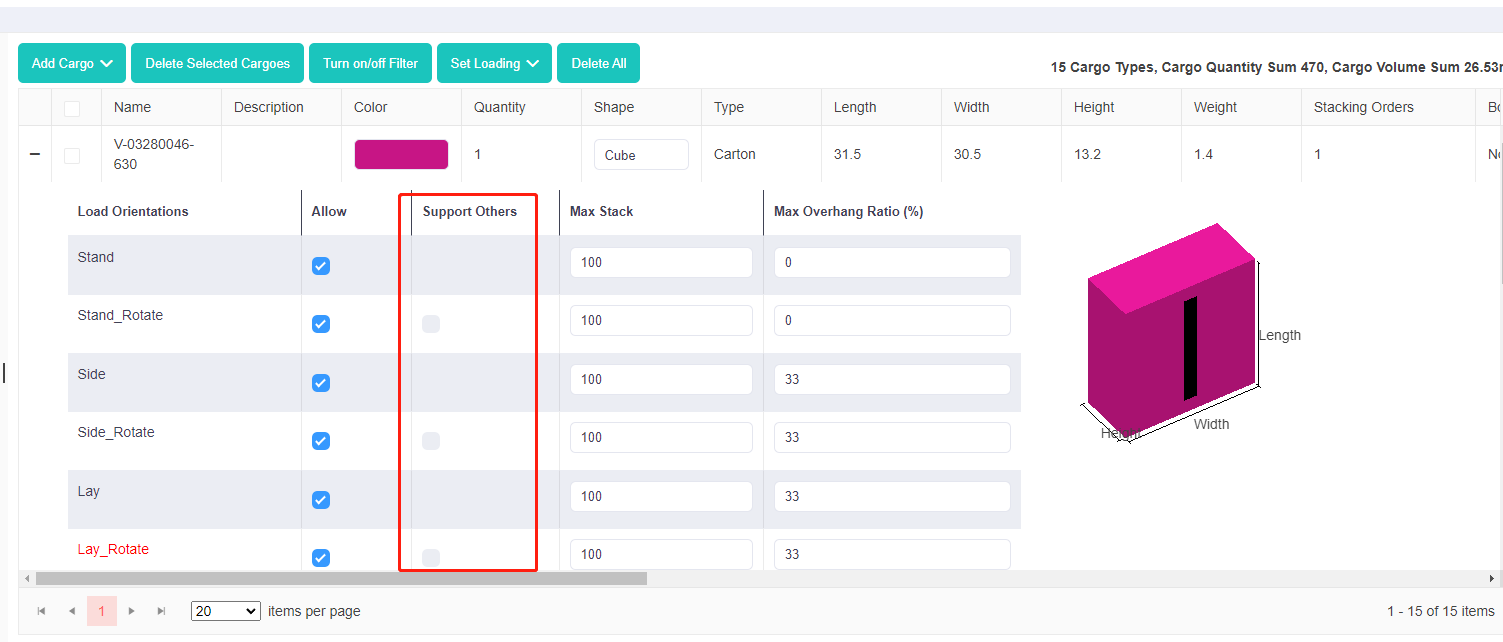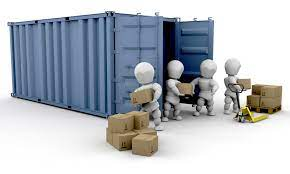In the logistics process, there are several key stages, including procurement, storage, inventory management, order picking and dispatch and transport and delivery of goods. Among these, order picking and dispatch, often referred to as loading, is the most crucial and important one. It not only enhances the utilization of container and reduces costs but also creates profits.
In the logistics industry, cargoes are generally categorized by density into Light Weight Cargo Heavy cargo and Dead Weight Cargo, with density classifications such as follows: cargo with a density of more than 1 ton per 3 cubic meters is called Light Weight Cargo, cargo with a density of less than 1 ton per 2 cubic meters is classified as Heavy Cargo, and cargo with a density ranging from 1 ton per 2.5 cubic meters to 1 ton per 3.5 cubic meters is generally referred to as Dead Weight Cargo.
It’s important to note that every container has limited cargo capacity. Their loading capacity and available volume are finite. As such, it is essential to use LoadMaster to help you with calculating cargo loading. This load planning calculator resolves the issue of how to maximize the container utilization rate without exceeding the max loading weight of container, which is essential to help decrease costs and gain more profits!
 This picture shows a container loading site.
This picture shows a container loading site.
- How to arrange the placement of light and heavy cargo while loading?
Typically, the loading of light and heavy cargo is based on the principle that heavy cargo is placed at the bottom to maximize the container’s loading capacity, while light cargo is loaded at the top to maximize the available space or volume. The result should be that the combined weight and volume of light and heavy cargo approach the maximum allowable loading capacity and volume. However, this distribution of light and heavy cargo must be done deliberately to ensure that both weight and volume approach their respective maxima while achieving the best economic benefit.
For companies that know well about their own products, it is possible to achieve the proper loading of light and heavy cargo by setting parameters in LoadMaster such as “Stacking Orders” “Bottom Only” and “Support Others”. “Stacking Orders” is a relative value to represent the cargo’s weight-bearing capacity, with goods of higher value being placed beneath goods with lower ones. “Bottom Only” can ensure that heavy cargoes are loaded at the bottom of the container. For delicate cargoes with low weight-bearing capacity, you can prevent other goods from being placed on top by unchecking “Support Others”.


For a long time, employees of logistics companies used to load cargoes based on experience alone. While some benefits were derived from this approach, it was only based on experience. The ability to evaluate whether maximum utilization of containers or the maximum benefits of loading efficiency had been achieved was never assessed. This approach also posed challenges when new employees were brought in. By using LoadMaster load planning optimization software to calculate cargo loading, the dependence on the experience is minimized, allowing the logistics industry to adapt to the development of a younger workforce on the front lines.

Guidelines to follow when using LoadMaster:
Measure the actual interior dimensions of the container and input these into the software.
Measure the actual dimensions and weight of the cargo and input these accurately into the software. Set parameters based on the actual transportation requirements.
When loading, pay attention to the orientation in which the cargo is placed and stacked. Follow the software’s loading guidance rigorously.
During loading, analyze each case individually to arrange the loading. Based on the value of the cargo, prioritize loading higher-value cargoes when the container still has remaining space. This can be achieved by using LoadMaster, increasing quantity of higher-value cargo, and subsequently raising the overall cargo value while relatively lowering the unit product shipping costs.
You can calculate load plans by checking “Automatically select containers to minimize the cost of containers used for loading” in LoadMaster load planning software to ensure that the container’s utilization rate is maximized and the benefits of loading efficiency are optimized.

What you should be aware of during loading:
Heavy cargo should not be placed on top of light cargo. For goods that are sensitive to weight, fragile, or prone to deformation, use LoadMaster software to ensure that they are loaded on top.
Pay attention to the weight distribution in the container. It should not be too heavy on one side to cause a center of gravity offset. LoadMaster load planning optimization software allows you to check the real-time position of the cargo’s center of gravity and the offset. If the percentage by which the center of gravity deviates from the center of the container exceeds 10%, you can use the manual edit to adjust the cargo’s position or exchange cargo between two different containers to ensure balanced weight distribution.

- During actual transportation, cargo that is not tightly stacked with others may shift during transit, potentially leading to cargo damage. LoadMaster load planning optimization software can predict the positions of high-value cargo. When necessary, you can add the buffer material to protect these cargoes.
LoadMaster has been widely adopted in the electrical and mechanical equipment industry, winning various famous companies such as SAIC Motor Group, Hisense Thyssen Elevator and so on.
Arrange the loading of light and heavy cargoes in a reasonable way can help reduce product damage. LoadMaster helps you load more and profit more!